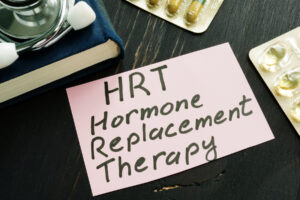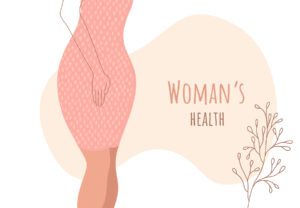 If you are considering feminine rejuvenation, chances are it’s vaginoplasty you have in mind. And you are correct! Vaginoplasty is the most commonly talked about type of vaginal rejuvenation, but it is not the only one. Surgical treatments include labiaplasty, clitoral hood reduction, mons pubis reduction, and vaginoplasty as part of gender affirmation surgery. There are also some non-surgical options for feminine rejuvenation treatments.
If you are considering feminine rejuvenation, chances are it’s vaginoplasty you have in mind. And you are correct! Vaginoplasty is the most commonly talked about type of vaginal rejuvenation, but it is not the only one. Surgical treatments include labiaplasty, clitoral hood reduction, mons pubis reduction, and vaginoplasty as part of gender affirmation surgery. There are also some non-surgical options for feminine rejuvenation treatments.
What Does it Do?
Overall, feminine rejuvenation treatments reshape, tighten, or reduce female genital tissues to help restore a firmer tone or symmetrical appearance. Though some patients choose feminine rejuvenation procedures for cosmetic reasons, others choose it to treat problems caused by vaginal tissue laxity, such as incontinence and discomfort during intercourse. Additionally, trans individuals who undergo gender affirmation surgery opt for vaginoplasty.
Who Needs It?
Comfort, safety, and self-confidence are major values feminine rejuvenation seeks to address. Misshapen or overly large labia can cause a lot of discomfort when exercising or wearing tighter clothing. Urinary leakage, vaginal dryness, and painful sexual intercourse are issues women face after childbirth or menopause.
The appropriate procedure can help reduce or eliminate urinary incontinence, alleviate vaginal dryness, help clothing fit more comfortably, improve sexual sensation, and provide changes to the genital area. All in all, the end goal of feminine rejuvenation methods is to alleviate any medical issues and ensure individuals are comfortable in, and happy with, their bodies.
Different Procedures
Labiaplasty: a surgical procedure to treat overly large or misshapen labia, as well as moderate to severe sagging in labial tissues, and other serious cosmetic issues that bother a patient. Discomfort is mild and recovery is fairly straightforward.
Vaginoplasty: a surgical procedure that takes place as either part of gender affirmation surgery or to treat childbirth injuries. May include different types of postsurgical care and recovery can take weeks or months.
Clitoral Hood Reduction: enlarged clitoral hoods can cause a lot of discomfort. This procedure removes excess tissue over the clitoris to address that, as well as improve sexual experiences.
Mons Pubis Reduction: for a more streamlined appearance to the pelvic area, excess fat and skin are removed from the mons pubis.
Non-Surgical Methods: most often using vaginal rejuvenation devices that emit gentle radio frequencies or therapeutic heat, non-surgical methods can help with urinary incontinence, sexual comfort, and vaginal dryness. Though the results may show quickly, they are not long lasting.
Risks
The type of feminine rejuvenation a patient undergoes depends on their unique medical condition, as well as the effect they desire to achieve. Different types of vaginal rejuvenation come with different timelines for healing, and some recoveries may be more complicated than others—vaginoplasty, for example, can take longer to heal than labiaplasty and can cause more complications during the recovery period.
If you are experiencing discomfort or are having symptoms that indicate feminine rejuvenation may help you live a healthier life, contact your medical professional to initiate an assessment and become further educated on the risks, benefits, and postsurgical care requirements associated with your case.
More
 Hormone replacement therapy (HRT) refers to any medication that contains female hormones. Women who are assigned female at birth (ciswomen) usually take it during menopause to replace the estrogen that their body stops making at this time. However, transwomen also take hormone replacement therapy to induce physical change caused by female hormones and promote the matching between gender identity and physical characteristics. Whether belonging in the former or the latter category brought you here, this piece informs you on both!
Hormone replacement therapy (HRT) refers to any medication that contains female hormones. Women who are assigned female at birth (ciswomen) usually take it during menopause to replace the estrogen that their body stops making at this time. However, transwomen also take hormone replacement therapy to induce physical change caused by female hormones and promote the matching between gender identity and physical characteristics. Whether belonging in the former or the latter category brought you here, this piece informs you on both!
Replacing Estrogen After Menopause
Two main types of estrogen therapy are given to ciswomen after menopause: systemic hormone therapy with a higher dose of estrogen that is absorbed through the body in the form of pills or cream, and low-dose vaginal products (cream or tablets) that minimize the amount of estrogen absorbed by the body. The second type is mainly used to treat the vaginal and urinary symptoms of menopause.
Feminizing Hormone Therapy
The purpose of feminizing hormone therapy is to block the action of the hormone testosterone. Estrogen is also prescribed to reduce the production of testosterone on the body and induce development of feminine secondary sex characteristics. If it is started before the changes male puberty hormones cause, then male secondary sex characteristics can be completely avoided.
What are the Risks?
For menopausal ciswomen, HRT has been found to increase the risk of heart disease, stroke, blood clots, and breast cancer. Those risks depend on the age of the patient, as women older than 60 or those who start therapy 10 years after menopause are at greater risk. Whether estrogen is given alone or with progestin can also affect the amount of risk menopausal women may face, as does each person’s individual family health history. Risk of cancer, heart disease, stroke, blood clots, liver disease and osteoporosis are factors that help determine if HRT is appropriate.
Transwomen who opt for HRT may face issues with fertility and sexual function, among other risks, including weight gain, high blood pressure, potassium, and triglycerides, type 2 diabetes, cardiovascular disease, excessive prolactin in your blood, and increased risk of breast cancer.
Benefits of HRT
If you are experiencing symptoms of menopause, such as vaginal dryness, itching, discomfort with intercourse, and the infamous hot flashes and night sweats, chances are HRT will help you alleviate those issues. Systemic estrogen also helps with osteoporosis and can lead to less bone loss and decrease the risk of fractures. If you are experiencing early menopause or estrogen deficiency, HRT can help not only with osteoporosis, but also with reducing the risk of heart disease, stroke, dementia, and mood changes.
If you are seeking HRT as part of your gender-affirming journey, then you already know that it will lessen the burden of gender dysphoria. Setting out to achieve the desired secondary sex characteristics also greatly reduces psychological and emotional distress, leading to improved mental, social, and psychological functioning. Sexual satisfaction is also known to be a positive effect of HRT among trans individuals, as is an overall improved quality of life and self-esteem.
More
 Many women utilize In Vitro Fertilization to achieve a healthy pregnancy, and discussions of the IVF process become more and more common. It is the most common form of assisted reproduction technology and has been around for approximately 40 years. It may sound daunting, as it does have a few steps and comes at a price, but what really is In Vitro Fertilization and what should you be looking out for if this is an option you are considering?
Many women utilize In Vitro Fertilization to achieve a healthy pregnancy, and discussions of the IVF process become more and more common. It is the most common form of assisted reproduction technology and has been around for approximately 40 years. It may sound daunting, as it does have a few steps and comes at a price, but what really is In Vitro Fertilization and what should you be looking out for if this is an option you are considering?
What is it?
The original definition means “fertilization in a glass,” where mature eggs are collected from the ovaries and are fertilized by the sperm in an incubator outside the body. Then, the healthiest embryo is transferred into the woman’s uterus. Though your specialist will determine what exactly is the best process for you, there are some standard steps in the IVF process, and a full cycle of IVF commonly takes 3-4 weeks. Sometimes the common steps are split into different parts, in which case the process may take longer.
The Steps
- Ovulation Induction: what marks the beginning of an IVF cycle is the use of artificial hormones to stimulate the production of multiple eggs. Though ovaries produce one egg during ovulation, more eggs are needed during IVF as some may not fertilize or develop normally after fertilization.
- Trigger Injection: before your eggs are ready for retrieval, you need 2-3 weeks of ovarian stimulation. Vaginal ultrasound or blood tests are then done to determine if the eggs are ready. Then, to assist the egg’s final maturation stage and loosening from the follicle wall, you will be given an injection of human chorionic gonadotrophin (hCG).
- Egg Retrieval: 34-36 hours after the injection your specialist will retrieve the matured eggs from your body. You may be lightly sedated during this 20-30 minute procedure and given some pain medication. On the same day, a semen sample will also need to be provided at your doctor’s office.
- Fertilization: this is the exciting part where the semen sample is washed and concentrated, and then added to the eggs approximately 4 hours after egg retrieval. They spend the night in an incubator and are checked the next day for fertilization. Usually, with a normal sperm sample, 60-70% of eggs will fertilize.
- Embryo Transfer: 2-3 days after egg retrieval you will be called back into your doctor’s office for the embryo to be placed in your uterus. The procedure is usually painless, and if this part of the procedure is successful, 6-10 days later you will have an implanted embryo on the lining of your uterus. This is called the Luteal Phase, followed by the Pregnancy Test about 14 days after the Embryo Transfer.
Risks
The most common risk when a woman is undergoing IVF is that there will not be a successful fertilization, or it will not lead to a successful pregnancy. Multiple cycles of IVF are not uncommon, but they can be financially stressful—as they range anywhere from 12k to 17k, according to the New York Times—and sometimes disheartening. Other risks include multiple pregnancies, ectopic pregnancy, miscarriage, premature delivery, and birth defects—among others.
More
By Iris Farrou
11 Mar, 2022
Pregnancy
Best gyns in Buffalo, Best OB practices in Buffalo, Best OBGYN Groups in Buffalo, Buffalo OB-GYN, Buffalo OBGYN, Chouchani MD, Healthy pregnancy, WNY OB-GYN, WNY Ob-gyn doctors, WNY OBGYN, women's health
 Pelvic organ prolapse is when pelvic organs slip down into—or even protrude out of—the vagina. This happens when there is not enough support for them due to weakened ligaments and pelvic floor muscles. Organs that may be affected are also the bladder, the vagina, and the rectum. As such, pelvic organ prolapse includes uterine prolapse, dropped bladder or cystocele, and rectocele.
Pelvic organ prolapse is when pelvic organs slip down into—or even protrude out of—the vagina. This happens when there is not enough support for them due to weakened ligaments and pelvic floor muscles. Organs that may be affected are also the bladder, the vagina, and the rectum. As such, pelvic organ prolapse includes uterine prolapse, dropped bladder or cystocele, and rectocele.
Who does it affect?
It may sound like a problem for much older women, and it is true: pelvic organ prolapse in its majority affects postmenopausal women and women who may have had more than one vaginal delivery. However, it can happen to women of any age, and it is recorded that pelvic organ prolapse affects 3% of women in the United States. A 2009 study in Obstetrics and Gynecology found that white and Hispanic women are more at risk for pelvic organ prolapse than women of other racial and ethnic groups.
How do I recognize it?
It may be easier to recognize the first symptoms of pelvic organ disorders, which are usually more common, and are accompanied by uterine incontinence or fecal incontinence. Though incontinence on its own does not necessarily mean your pelvic organs have prolapsed, it can generally be a tell-tale sign. Organ prolapse will cause a visible bulge in the vagina, or sometimes you may experience uncomfortable pressure during sex or other physical activities.
The feeling of discomfort or constant pressure in the pelvis is a common symptom, especially if that pressure gets worse as the day goes by. You may also find that you are having trouble inserting tampons or even feeling and seeing something “bulge” out of the vagina.
How is it treated?
Treatments can vary depending on the type of prolapse you have and other factors, but some of them include:
- Pelvic floor muscle therapy to strengthen your pelvic muscles
- Changing eating habits to support a diet that is rich in fiber so as to limit strain during bowel movements
- Pessary: a removable device to support the pelvic organs
- Surgery to support the uterus or the vagina, using your own body tissue or synthetic mess
Research is still underway to find ways to prevent pelvic organ prolapse, but thankfully there are numerous treatment options, and it is never too early to start strengthening your pelvic muscles!
More
 Coming home from the hospital with your newborn can be as exciting as it can be overwhelming! All the months, or even years, of preparing for this moment are coming to fruition, and the family is ready to welcome the newborn. But perhaps as a new mother you are not prepared for the effect that giving your all to your baby may have on you and your body… like most new mothers, you are aware of the possibility of postpartum depression, changes in your intimate life, and all the challenges the come with adjusting to life after giving birth.
Coming home from the hospital with your newborn can be as exciting as it can be overwhelming! All the months, or even years, of preparing for this moment are coming to fruition, and the family is ready to welcome the newborn. But perhaps as a new mother you are not prepared for the effect that giving your all to your baby may have on you and your body… like most new mothers, you are aware of the possibility of postpartum depression, changes in your intimate life, and all the challenges the come with adjusting to life after giving birth.
These are just some suggestions of what you can do to take care of yourself during the postpartum period:
- Plan something special for yourself. After being overwhelmed and out of your home, as well as going through labor, it can feel very refreshing to have something special waiting for you: a new pair of socks, your favorite ice cream, or a small cosmetic item.
- Enjoy things that remind you of who you are. In the first few days after giving birth, it can feel as if your whole existence is part of your baby, or that you only exist in relation to your newborn. It is important to find small things that help you invest in yourself as a person, so you can continue the personal growth that will allow you to be the best parent you can. Spend a few minutes reading a book or listening to an audiobook or podcast while doing laundry—you deserve a mental break from being a parent!
- Prioritize rest and relaxation. One of the most common challenges of being a new parent is sleep deprivation, and it can make any situation feel much worse than it is. With a newborn, it may not be possible to sleep through the night. However, you can develop the habit of taking naps whenever possible or trying to carve out some time for a relaxing shower.
- Accept help from others. Though you may feel like a super-mom, you don’t need to be! Friends and family, as well as people who love you, are there for you and your baby. Whenever possible, reach out and ask for help with even simple everyday tasks. Someone helping you clean the kitchen or taking out the trash can feel like a tremendous gift when your days and nights are spent taking care of your newborn.
In addition to these postpartum practices, you may want to consider some self-care items that can help your mind and body feel better and heal. This can be a massage oil to help sore muscles, nipple balm to help you with breastfeeding, a weighted blanket to create calming effects and soothe overstimulated nerves, or a sleep mask to help you snooze during the day. You may also want to consider a neck and back massager or a cozy robe. If you can afford it, this would be an optimal time to hire a house cleaning service as well!
More
 As much joy as a pregnancy brings, there are also a lot of worries that accompany it. While preeclampsia may summon dated references like Lady Sybil’s death on Downton Abbey, it still affects women today. According to the CDC, 1 in 25 pregnancies in the United States are affected by preeclampsia—the sudden elevation of the mother’s blood pressure after the 20th week of pregnancy.
As much joy as a pregnancy brings, there are also a lot of worries that accompany it. While preeclampsia may summon dated references like Lady Sybil’s death on Downton Abbey, it still affects women today. According to the CDC, 1 in 25 pregnancies in the United States are affected by preeclampsia—the sudden elevation of the mother’s blood pressure after the 20th week of pregnancy.
What is it and what are the causes?
Preeclampsia usually begins after the 20th week of pregnancy, with some rare cases of postpartum preeclampsia. It is characterized by high blood pressure, as well as damage to the liver and kidneys. There may also be protein in the women’s urine and low levels of platelets. For a preeclampsia diagnosis, the mother’s blood pressure during pregnancy needs to be persistent and other symptoms of organ damage, low platelets, fluid in the lungs, and/or signs of brain trouble need to be present.
The causes of preeclampsia have not yet been precisely identified. However, potential causes include genetic factors, blood vessel problems, and chronic hypertension, as well as metabolic diseases or autoimmune disorders. There are some known risk factors that may increase the chances of preeclampsia, such as:
- history of preeclampsia in your family
- preeclampsia in a previous pregnancy
- having a multiple pregnancy or becoming pregnant via IVF
- being over the age of 40
- having obesity
- being pregnant for the first time
How Can it be Treated?
To receive a diagnosis and treatment, watch out for the following symptoms:
- signs of kidney problems and excess protein in your urine
- severe headaches and changes in vision
- upper abdominal pain
- nausea or vomiting, as well as shortness of breath
Some symptoms may go unnoticed, such as sudden weight gain and swelling, since they are normal symptoms of a pregnancy, so watch out for a combination of symptoms and attend all your prenatal appointments to ensure you and your baby’s safety.
With preeclampsia, you are at increased risk of seizures, stroke, severe bleeding, and placental abruption. As such, the most effective treatment is delivery. Possible medications may include antihypertensives to help lower your blood pressure, corticosteroids that can temporarily improve liver and platelet function, as well as anticonvulsant medications to prevent seizures. Severe cases of preeclampsia may require you to be hospitalized, but by far the most effective treatment is delivery of the baby. Be wary of the traditional suggestion of “bed rest,” as in this case it can actually be more harmful since it increases the risk of blood clots.
More
By Iris Farrou
11 Feb, 2022
Women's Health
Best gyns in Buffalo, Best OB practices in Buffalo, Best OBGYN Groups in Buffalo, Buffalo OB-GYN, Buffalo OBGYN, Chouchani MD, Healthy pregnancy, Preeclampsia, WNY OB-GYN, WNY Ob-gyn doctors, WNY OBGYN, women's health, women's health tips

The arrival of a new baby into the family is a wonderful thing. All family members are excited to welcome the newborn! Since it is a new family member, it is also possible that family dynamics will change and be affected—especially if your older child is about to become the Big Sibling. So, what can you do to ensure introductions go smoothly?
- Share the news, but not too early! Share the news early with family and friends, but remember younger kids or toddlers have a limited sense of time: if you tell them something is going to happen, they expect it in the next moment, and non-specific waiting periods may cause worry and anxiety. Wait as long as you can, and then share the news with your older children by giving them concrete details about the timeline they can understand, like “after the snow melts,” or “when school starts”
- Your older kid may seem “older” to you, especially when a newborn arrives, but their perception of themselves is much different: they are still trying to figure out what their sense of self is, how the world works, and still have baby needs. Remind them that they will always be your first baby and be cautious to still tend to their baby needs even if you see them as older or more independent than the new baby.
- In a similar vein, because your older child may be unsure of their new role as a Big Sibling and possibly feel like more attention is given to the newborn, expect regression. Both toddlers and older children regress, even in toilet manners and sleep disruption. They need you more, so try your best to bring them closer during this time and give them extra cuddles, hugs, and babying them.
- Include them in the baby’s life in tangible ways, placing the attention on them: tell them the baby was waiting for them to get back from school, or allow them to open presents that arrive in the house. Young children like to help, so try and make them your sidekick in taking care of the baby: they can hold a toy for you while you buckle in the baby, or hand you a towel during bath time. These small acts go a long way in a toddler’s world!
And finally, remember that jealousy is normal. There is no doubt that in a healthy family environment your children will become friends, but that is in due time. For the time being, show your older child that there is a balance between the attention you give to the baby and the attention you give to them: remind them of the things you do together, and recognize that negative feelings should be expressed and are not necessarily bad—it’s all part of this new process the whole family is in!
Our offices, serving Buffalo, Williamsville, and WNY, are accepting appointments for new patients. Click here to learn more: WYN OBGYN.
More
 Proper female hygiene is one of the most important gifts a woman can give her body. It not only ensures great personal hygiene, but it also protects us from facing more severe health issues that may be cause by poor female hygiene. Learning how to properly care for ourselves, however, can be a bit tricky as there is a lot of untrue information circulating the internet, and numerous products on the shelves that promise good hygiene but may not actually be that safe to use.
Proper female hygiene is one of the most important gifts a woman can give her body. It not only ensures great personal hygiene, but it also protects us from facing more severe health issues that may be cause by poor female hygiene. Learning how to properly care for ourselves, however, can be a bit tricky as there is a lot of untrue information circulating the internet, and numerous products on the shelves that promise good hygiene but may not actually be that safe to use.
These are some of the most common myths about female hygiene:
- You Need Special Products—no, you do not. The vagina has the ability to self-clean, and the vulva can be cleaned by thoroughly washing it with lukewarm water. You may use a mild, unscented soap if you wish, but make sure to wash off with plenty of water and pat the area dry, as extra moisture enables bacteria growth.
- Vaginal Discharge Means Yeast Infection—it doesn’t. Vaginal discharge is absolutely normal and varies throughout your cycle. Secretions help remove bacteria and dead cells, thus keeping a healthy balance of vaginal flora. Healthy discharge does not have a strong odor or color and it shouldn’t cause discomfort. If you notice a strong odor, discharge that is abnormal to your body, and soreness and itching on the vaginal area, then you may be experiencing symptoms of an infection.
- Vaginal Odor Means I Have an STI—not always. Every vagina has a distinct smell that also varies throughout the cycle, any may be more potent after you sweat or after sexual intercourse. More often, vaginal odor can be a symptom of bacterial vaginosis: this happens when there is a change in vaginal bacteria, but it is not an STI. As a rule, vaginal odor on its own is not a sign of an STI, but if it comes along with soreness, itchiness, abnormal discharge, or other signs it may require further attention.
- Douching Maintains Vaginal pH—quite the opposite! Douching is the process of water-soap or vinegar-soap into the vagina to clean it and get rid of the odor. These mixtures contain fragrances that upset the natural balance inside the vagina. Douching can disturb your vaginal pH balance and can lead to inflammation.
- Underwear Choice Doesn’t Matter—but it does. The most gentle and natural fabric for your skin is cotton. It is breathable and absorbs moisture easily, thus helping absorb vaginal discharge without trapping extra moisture. Synthetic underwear can cause redness and chafing, which may then lead to other conditions such as yeast infections.
Despite the marketing many products engage in to convince you that they are good for you, remember to check the ingredients. You do not need to risk irritating your vagina with harsh soaps, or oil-based lubes, or vaginal sprays that contain harmful chemicals. Remember that your vagina is like a self-cleaning oven, and it needs very little external products for its maintenance.
Our offices, serving Buffalo, Williamsville, and WNY, are accepting appointments for new patients. Click here to learn more: WYN OBGYN.
More

Nearly every woman who has gone through menopause can attest to the numerous changes that come with it and are the results of lower estrogen levels in female bodies. Menopause changes can pose several health risks for women, both physical and mental. Some of the health issues postmenopausal women face are:
- Heart Disease: Estrogen helps keep blood vessels flexible, but this is a benefit that’s lost after menopause. A study published in February 2021 also linked persistent hot flashes to future cardiovascular disease.
- Osteoporosis: Women’s bones are protected by estrogen before menopause, but a year before menopause is finalized and for a few years after, the American College of Obstetricians and Gynecologists has found that bone loss is very rapid.
- Weight Gain: Though many women consider this solely an issue of aesthetics, the changing metabolism resulting from menopause actually puts women in risk of type 2 diabetes.
- UTIs: The vaginal tissue can become thinner and drier due to lower estrogen levels, thus increasing the risk of UTIs, as bacteria has more fertile ground in which to grow.
Along with the physical issues that women face as a result of menopause, studies also find that older women are also more likely than men to develop not only chronic health problems, but also cognitive problems. Anxiety, for example, affects 10-20% of older adults, but it often goes undiagnosed or is misdiagnosed as a side effect of other medications. Older adults may often leave mental health issues untreated since they commonly dismiss them as aches of their older age. Here are some ways in which you can recognize anxiety in older adults and help them seek appropriate treatment:
- Generalized Anxiety Disorder (GAD) may be what we most often see older adults struggle with, as those with GAD worry about a plethora of things (such as declining health, money, safety, family problems) when there may be little to no reason for such worries. It can lead to sleeplessness and difficulty relaxing, as well as fatigue, aches, irritability, nausea, and other physical symptoms.
- Social Phobia or Social Anxiety Disorder is when someone feels anxious or overly self-conscious in social situations. Older persons may experience heightened self-consciousness or embarrassment in social situations because of possible declining health, aging, and change in appearance. This can lead to loss of friendships or difficulty socializing, and can be accompanied with physical symptoms of sweating, trembling, and difficulty talking.
- Specific phobias, in general, mean the intense fear of a situation, place, or event that may pose little to not threat. Phobias common among elders are fear of death and disaster to family. Thinking about, or facing, these situations can cause severe anxiety or a panic attack.
Remember that even though older adults may dismiss issues of mental health, these problems are very real and can have a severe effect on physical health. Thankfully, they are also treatable with the assistance of a mental health professional or consistent therapy. Contact our offices, serving Buffalo, Williamsville, and WNY, to schedule an appointment to talk to your doctor about your body’s menopausal changes: WYN OBGYN.
More

The holidays can be a relaxing and socializing time, but they can also be a time of holiday stress. Experts give us some tips on how to maintain healthy stress levels during this holiday season while keeping COVID safe and being mindful of our body’s health.
COVID Safety
As vaccination rates increase, you can likely choose if you are spending the holidays with vaccinated, COVID-safe individuals. Regardless, you should wash your hands often to prevent the spread of germs. Similarly, you should stay warm and bundled up to not jeopardize your immune system. You may let a little loose during the holidays, but remember smoking causes health risks. Last but not least, monitor children’s activity to see they are keeping safe and having a good time.
Body Health
Holiday living isn’t always friendly to healthy living, especially when it comes to diets and routines.
Here are some easy diet tips to practice this holiday season:
- Find healthy alternatives to your favorite dishes or substitute ingredients with their healthier counterparts. For example, use yogurt instead of mayonnaise, and bake instead of frying.
- Exercise moderation. No need to push your body past its limits when it comes to food and desserts. Keep your portions smaller if you want to extend your mealtime, or if you have several meals planned throughout the day. Avoid foods that upset you.
- Homemade foods instead of processed foods are a better idea. Canned, processed, and premade foods are full of salt and sugar that homemade foods usually don’t have.
- Adding more vegetables to traditional dishes or using vegetable-based recipes as side dishes is an easy way to eat your greens while enjoying holiday meals!
- Taking a walk after mealtimes can help your body digest. Research suggests it is best to take a walk directly after a meal to assist your digestion—and even get some alone time.
Managing Stress
The holiday season can come with heightened stress, or even depression. The demands are higher, financial stress is at play, and with guests around you may not get a moment to yourself. You may also be spending the holidays alone when you would like to have company or have recently lost a loved one.
Here are some tips to handle holiday-related stress:
- Acknowledge your feelings and express them. If you can’t talk to someone, you can write them down. Whether your feelings are positive or negative, it is important to not keep them bottled up.
- Reach out to friends, family, or the community. If you are feeling isolated and lonely or cannot (or don’t want to) reach out to friends and family, community events during the holiday season are an easy way to get some low-stakes socialization. Plenty of community programs organize more events around the holidays, and volunteering or participating is easy.
- Plan ahead and keep your habits, as sticking to a routine or a schedule you are familiar with can help minimize stress. Take agency over holiday plans and keep your limits.
Overall, remember to prioritize the things that make you happy! Avoiding over committing to events that cause stress or are more of an obligation. Spend the time with the people you love doing things you enjoy.
More
By Iris Farrou
21 Dec, 2021
Mental Health
Best gyns in Buffalo, Best OB practices in Buffalo, Best OBGYN Groups in Buffalo, Buffalo OB-GYN, Buffalo OBGYN, Chouchani MD, Healthy holiday tips, holiday stress, WNY OB-GYN, WNY Ob-gyn doctors, WNY OBGYN, women's health
 If you are considering feminine rejuvenation, chances are it’s vaginoplasty you have in mind. And you are correct! Vaginoplasty is the most commonly talked about type of vaginal rejuvenation, but it is not the only one. Surgical treatments include labiaplasty, clitoral hood reduction, mons pubis reduction, and vaginoplasty as part of gender affirmation surgery. There are also some non-surgical options for feminine rejuvenation treatments.
If you are considering feminine rejuvenation, chances are it’s vaginoplasty you have in mind. And you are correct! Vaginoplasty is the most commonly talked about type of vaginal rejuvenation, but it is not the only one. Surgical treatments include labiaplasty, clitoral hood reduction, mons pubis reduction, and vaginoplasty as part of gender affirmation surgery. There are also some non-surgical options for feminine rejuvenation treatments.








